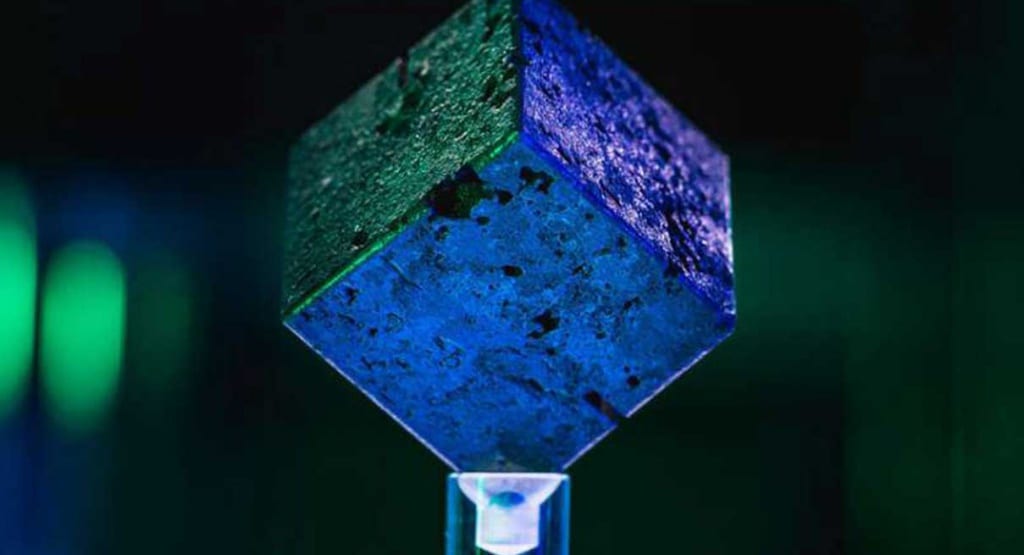It sounds like something from a Marvel movie: mysterious, lost “Heisenberg cubes” of Nazi-era science. But Heisenberg cubes are very real — they were part of the Nazis’ race to build an atomic weapon. Nearly all were lost in the chaos of the fall of the Third Reich, but scientists hope that a new method will help to track them down.
More than 600 “Heisenberg cubes” — vital components of the Nazis’ plans to build both a nuclear reactor and an atomic bomb and named after Werner Heisenberg, one of the German physicists who created them — were seized from a secret underground laboratory at the end of World War II and brought to the United States. Over 1,200 uranium cubes were believed to be created across Nazi Germany. But today, researchers only know the locations of roughly a dozen.
The new technique, tested on a cube that mysteriously found its way to the researchers at the Pacific Northwest National Laboratory (PNNL) in Washington state, was presented Tuesday (Aug. 24) at a meeting of the American Chemical Society and could help track down illegally trafficked nuclear material.
Alongside their own cube, the researchers have access to a few others held by research collaborators. They hope their new technique will be able to not only confirm the cubes’ provenance in Nazi Germany, but also tie them to the specific labs where they were first created.
The cubes’ very existence serves to show how the outcome of WWII could have been very different. By the time the Manhattan project had detonated the first bomb, Germany had been defeated. Germany’s defeat had been on the cards since at least 1942 (indeed many German generals were certain from the outset that the War could not be won). But a nuclear-armed Third Reich would have been a very different proposition.
When Adolf Hitler first came to power, German nuclear experiments were at the cutting edge of research. In 1938, German radiochemists Otto Hahn and Fritz Strasserman were the first to split the atom to release enormous amounts of energy. During World War II, German scientists competed to find a way to transform cubes of uranium into plutonium — a key ingredient in early nuclear bombs — using prototype reactors.
German scientists hung the cubes, just 2 inches (5 centimeters) wide on each side, on cables and submerged them in “heavy” water, in which hydrogen is replaced by a heavier isotope called deuterium. The German scientists hoped their reactors would trigger a self-sustaining chain reaction, but their designs failed.

A little known Allied operation in Nazi-occupied Norway helped ensure the end of Germany’s nuclear program. Norway’s Vermork power station was one of the only places in the world producing heavy water. Between 1940 and 1943, a series of operations put the crucial plant out of operation.
Still, prominent physicists, including Nobel Prize-winner Werner Heisenberg, worked in a secret lab below a mediaeval church to build an atomic bomb for the Nazis.
After discovering Heisenberg’s lab in 1945, U.S. and British forces retrieved 664 of the cubes that were buried in a nearby field and shipped them to the U.S. Some may have been used in the American nuclear weapons effort, while others found their way into the hands of collectors.
The chaotic collapse of the Nazi nuclear program likely means that many of the cubes could still be out there.
Live Science
Some were said to be handed out as souvenirs. One was found in a drawer in New Jersey, another in a German creek: said to have been tossed there by Heisenberg himself, fleeing Allied soldiers.
Researchers have developed radiochronometric tests, similar to the sort of tests used by geologists to date rock samples, to date potential Heisenberg cubes. A second technique tests the chemical outer coatings that different Nazi laboratories applied to their cubes to limit oxidation. This will enable researchers to trace cubes to the specific lab that created them.
These technique might not just be useful in finding the origins of the Heisenberg cubes, but in tracing the provenance of other smuggled nuclear materials.
Meanwhile, let us be grateful that Hitler never got his hands on the bomb.
Please share this article so that others can discover The BFD









